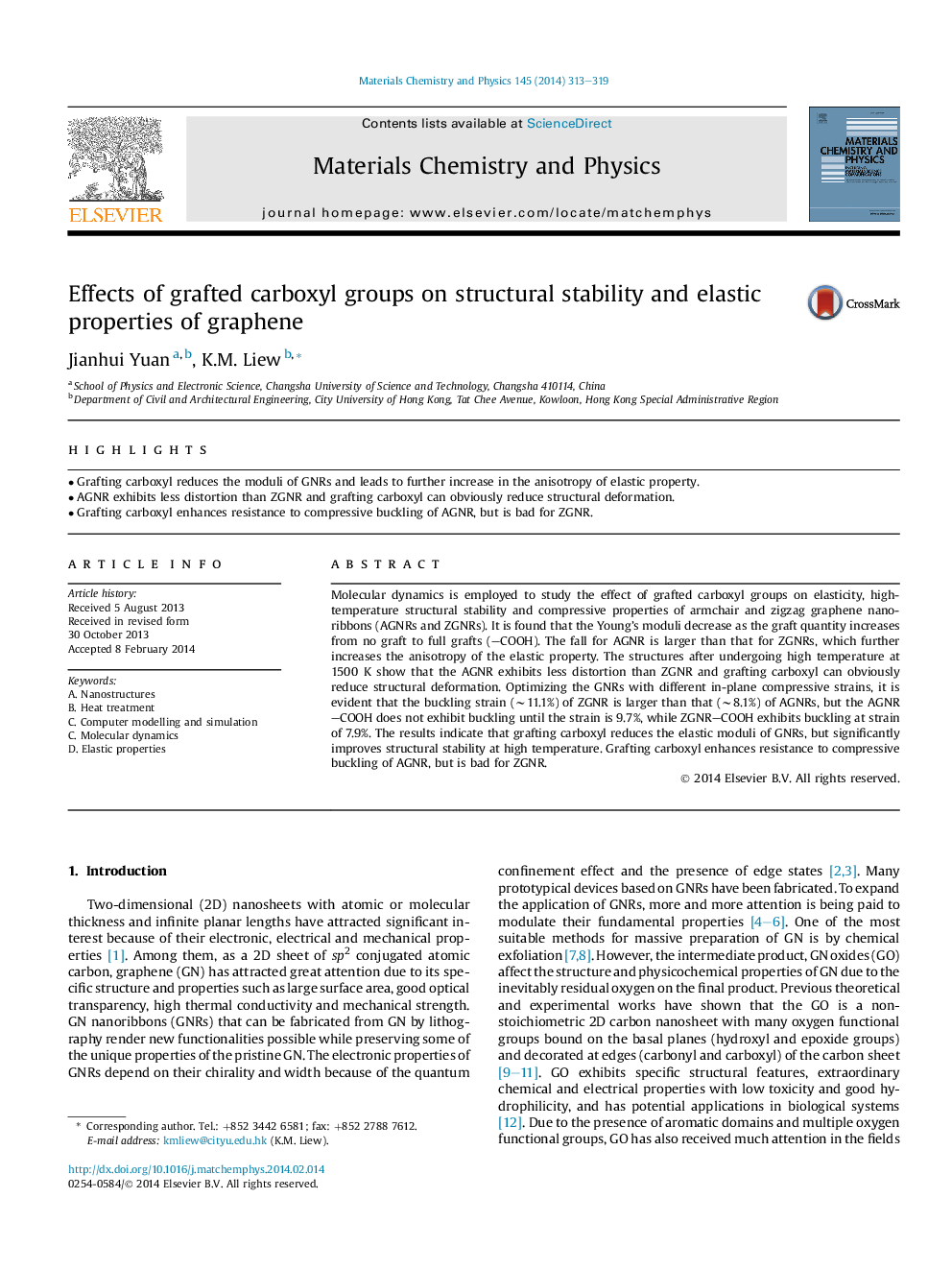| Article ID | Journal | Published Year | Pages | File Type |
|---|---|---|---|---|
| 1522012 | Materials Chemistry and Physics | 2014 | 7 Pages |
•Grafting carboxyl reduces the moduli of GNRs and leads to further increase in the anisotropy of elastic property.•AGNR exhibits less distortion than ZGNR and grafting carboxyl can obviously reduce structural deformation.•Grafting carboxyl enhances resistance to compressive buckling of AGNR, but is bad for ZGNR.
Molecular dynamics is employed to study the effect of grafted carboxyl groups on elasticity, high-temperature structural stability and compressive properties of armchair and zigzag graphene nanoribbons (AGNRs and ZGNRs). It is found that the Young's moduli decrease as the graft quantity increases from no graft to full grafts (–COOH). The fall for AGNR is larger than that for ZGNRs, which further increases the anisotropy of the elastic property. The structures after undergoing high temperature at 1500 K show that the AGNR exhibits less distortion than ZGNR and grafting carboxyl can obviously reduce structural deformation. Optimizing the GNRs with different in-plane compressive strains, it is evident that the buckling strain (∼11.1%) of ZGNR is larger than that (∼8.1%) of AGNRs, but the AGNR–COOH does not exhibit buckling until the strain is 9.7%, while ZGNR–COOH exhibits buckling at strain of 7.9%. The results indicate that grafting carboxyl reduces the elastic moduli of GNRs, but significantly improves structural stability at high temperature. Grafting carboxyl enhances resistance to compressive buckling of AGNR, but is bad for ZGNR.
